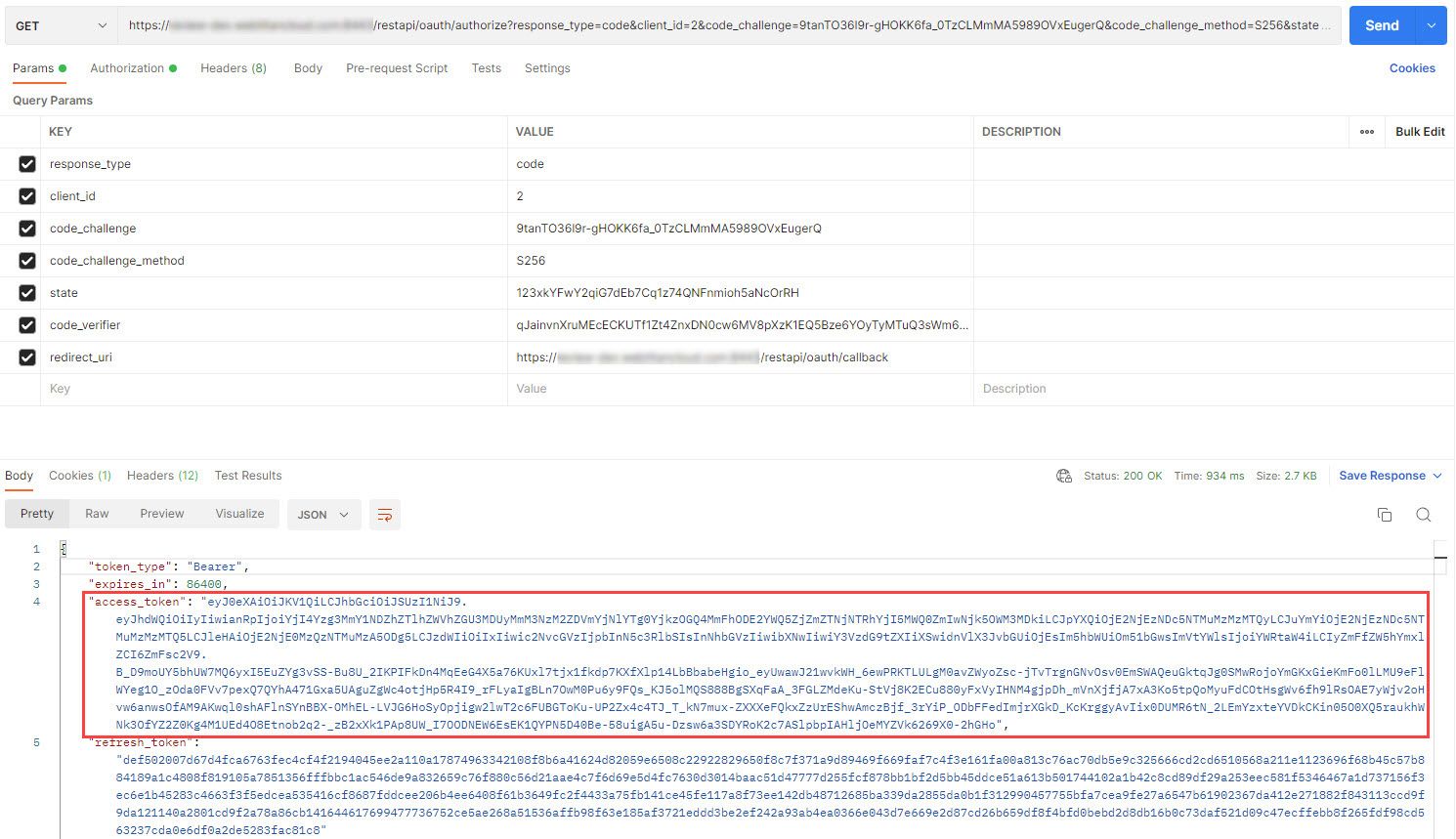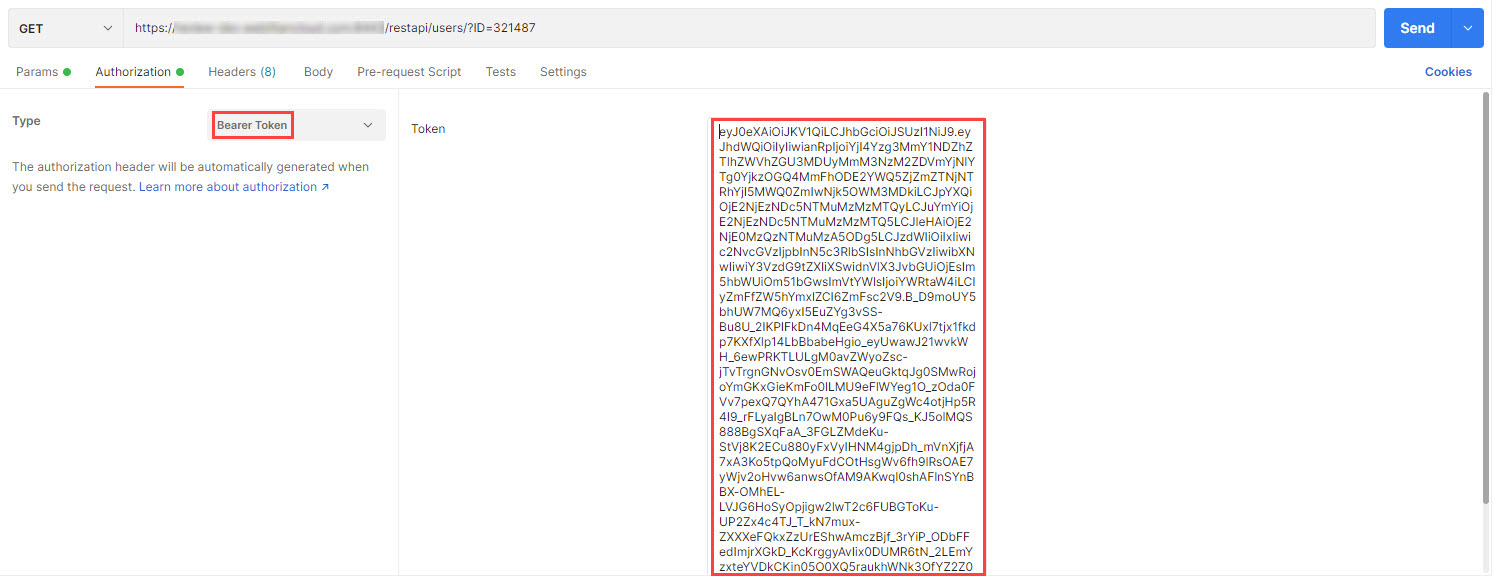WebTitan API Authentication
WebTitan API uses OAuth 2 with Proof Key for Code Exchange (PKCE) for authentication. PKCE is an additional layer in the OAuth 2.0 Authorization Code Flow and provides better security for use in applications that can not store a client secret, such as single-page applications.
Full WebTitan API documentation is available at https://support.titanhq.com/webtitan-api/.
With PKCE, a code verifier and a code challenge are used when exchanging the authorization code for an access token, replacing the client secret used in OAuth1. See https://www.rfc-editor.org/rfc/rfc7636  for more information on PKCE.
for more information on PKCE.
The following are the authentication steps to get an access token which can then be used to call WebTitan API endpoints. Examples shown use the Postman API client. See https://www.postman.com/ 
Create the three parameters required in the initial authorization call to WebTitan that are self-generated: state, code_verifier and code_challenge:
state: This is a random 40 character string created by you. It can be generated using an online tool such as http://www.unit-conversion.info/texttools/random-string-generator/
 . For example:
. For example:123xkYFwY2qiG7dEb7Cq1z74QNFnmioh5aNcOrRH
code_verifier: This is a random 128 character string created by you. It can be generated using an online tool such as http://www.unit-conversion.info/texttools/random-string-generator/
 . For example:
. For example:qJainvnXruMEcECKUTf1Zt4ZnxDN0cw6MV8pXzK1EQ5Bze6YOyTyMTuQ3sWm6t0CTpWlNZGHZxvVwz23fsAfakVigCVd6jFswK9nbeQ4EuLPvdGvnw5JDmrv2esFu75S
code_challenge: This is a SHA-256 encoded parameter generated by you using the code_verifier created in the previous step. To do this, submit the code_verifier in an online tool such as https://tonyxu-io.github.io/pkce-generator/
 . For example:
. For example:9tanTO36l9r-gHOKK6fa_0TzCLMmMA5989OVxEugerQ
Make the oauth2 call to WebTitan to request an access token.
Format: GET https://your-API-URL.webtitancloud.com:8443/restapi/oauth/authorize
The following GET and Basic Auth parameters are required to make the call:
Parameter
Description
Example
response_type
This is always "code".
code
client_id
This is always "2".
2
code_challenge
An SHA-256 encoded code_verifier (see Step 1).
9tanTO36l9r-gHOKK6fa_0TzCLMmMA5989OVxEugerQ
code_challenge_method
S256
S256
state
This is a self-generated random 40 character string that you create (see Step 1).
123xkYFwY2qiG7dEb7Cq1z74QNFnmioh5aNcOrRH
code_verifier
A self generated 128 character string that you create (see Step 1).
qJainvnXruMEcECKUTf1Zt4ZnxDN0cw6MV8pXzK1EQ5
Bze6YOyTyMTuQ3sWm6t0CTpWlNZGHZxvVwz23fsAf
akVigCVd6jFswK9nbeQ4EuLPvdGvnw5JDmrv2esFu75S
redirect_uri
The exact WebTitan URL that you are calling to, with port number, followed by /restapi/oauth/callback
See WebTitan API URLs to determine your API URL.
https://your-API-URL.webtitancloud.com:8443/restapi/oauth/callback
See WebTitan API URLs to determine your API URL.
code (optional)
This parameter is only required if 2FA is enabled on your WebTitan. It is the 6 digit code from your authenticator app.
384 519
The following Basic Auth parameters must also be passed:
Parameter
Description
Example
Username
Your WebTitan username
admin@yourcompany.com
Password
Your WebTitan password
6*4iw48Xkg3M
Using the examples above, the complete request looks as follows in Postman:


An access token is returned, which displays in Postman as follows below. Select and copy the access token.

Once copied, this can then be used for authorization when calling other endpoints. In Postman, this is specified in the Authorization tab as shown below. The token type is Bearer Token.
